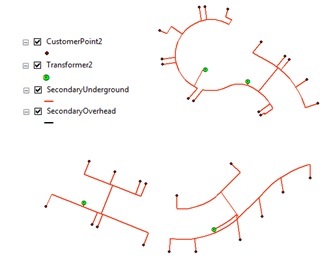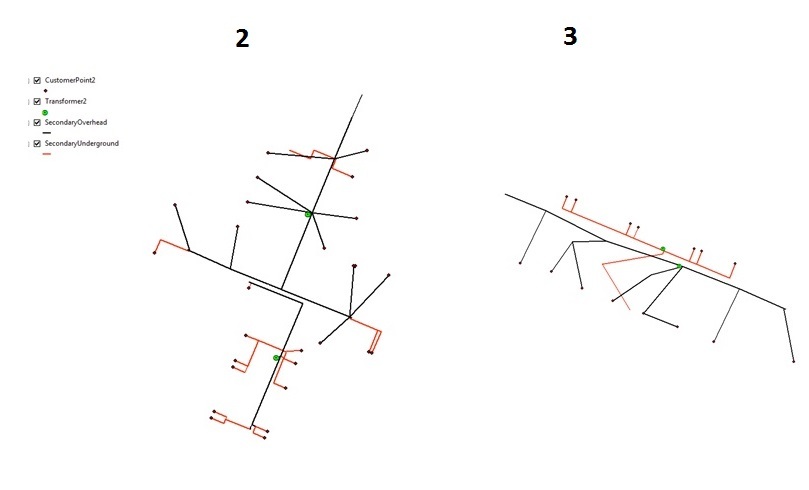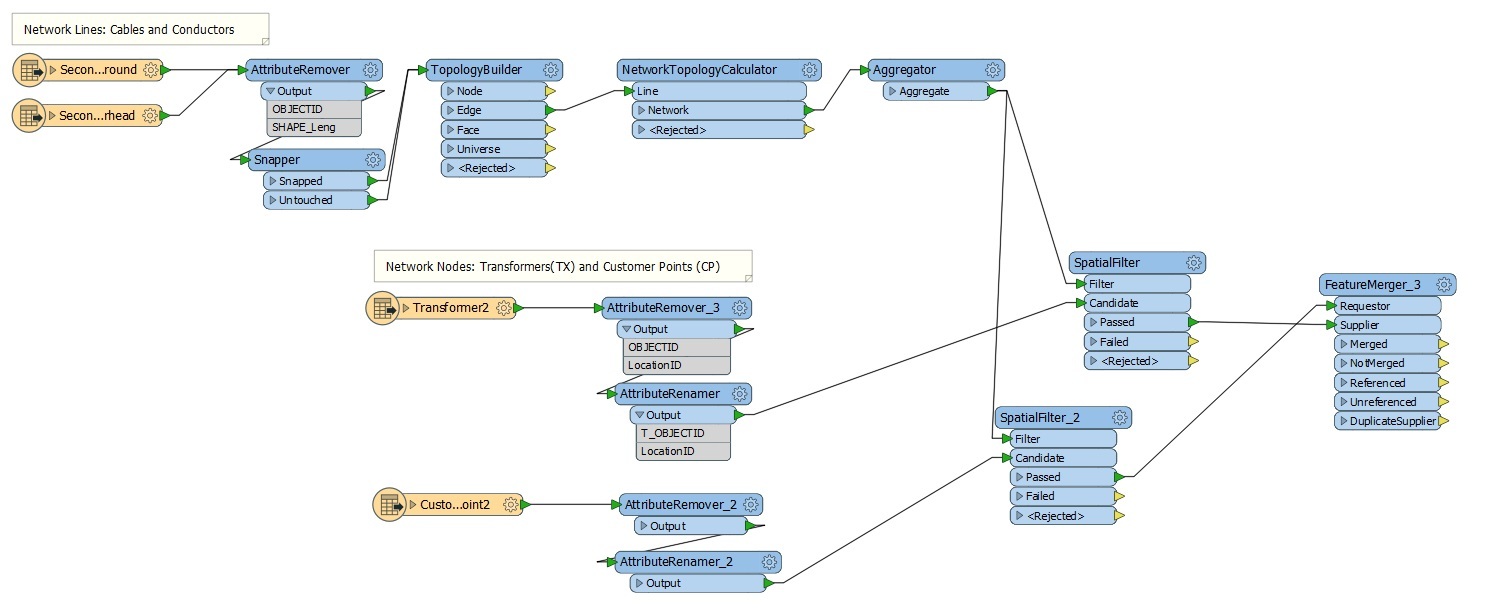Hi All,
This question stems from my previous question. I am choosing to ask another question as not to clutter that.
I have a network of Customer Points (CPs) and Transformers (TXs) connected via secondary electrical cables (both underground and overhead). I would like to find which CP is connected to which TX. Multiple CP's can be connected to a TX. I would like to export a table like the following:
CP TX
1 1
2 1
3 1
4 2
4 2
My Approach: Thanks to @david_r
1) Topology Builder Transformer used to determine topological relationships within the line network (secondary underground cable and secondary overhead conductor)
2) Network Topology Calculator to find connecting lines and add Network_ID to line
3) Aggregate lines grouped by Network_ID
4) Using SpatialFilter, find TX’s and CP’s that intersect with the same network and transfer TX id to CP as an attribute to generate csv (Using Feature Merger)
Works great for isolated networks (Secondary Underground networks) shown in the image

Problem: When the network of underground and overhead cables is input to topology builder, it is broken down based on any intersection. There are segments that require the intersection between underground and overhead cables to connect CPs to TXs. The image below (2) shows two network clusters both services by different transformers. If only the overhead or underground cables were input, some CP’s would lose connectivity to their upstream TX. So, the previous method works for these ones as well and it is important to input both types of cable lines together.
But for network segments that criss-cross but are not part of each other… that’s where the problem starts. Shown in the image below (3):

Here, the red lines correspond to a network segment of underground cables that connect 7 CP’s to 1 TX. The black lines correspond to a segment of overhead cables connecting 8 CP’s to another TX. TopologyBuilder is breaking every bit of line that intersects and when Aggregate is used, it aggregates this whole thing as one network segment.
MY QUESTION: Is there ANY WAY to separate underground lines that only cross overhead lines but does not snap on? How would I go about changing the workflow to include that exception? Any ideas would be greatly appreciated. Thanks so much!
The Workbench is attached




